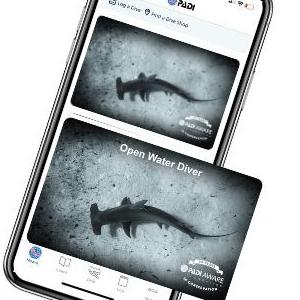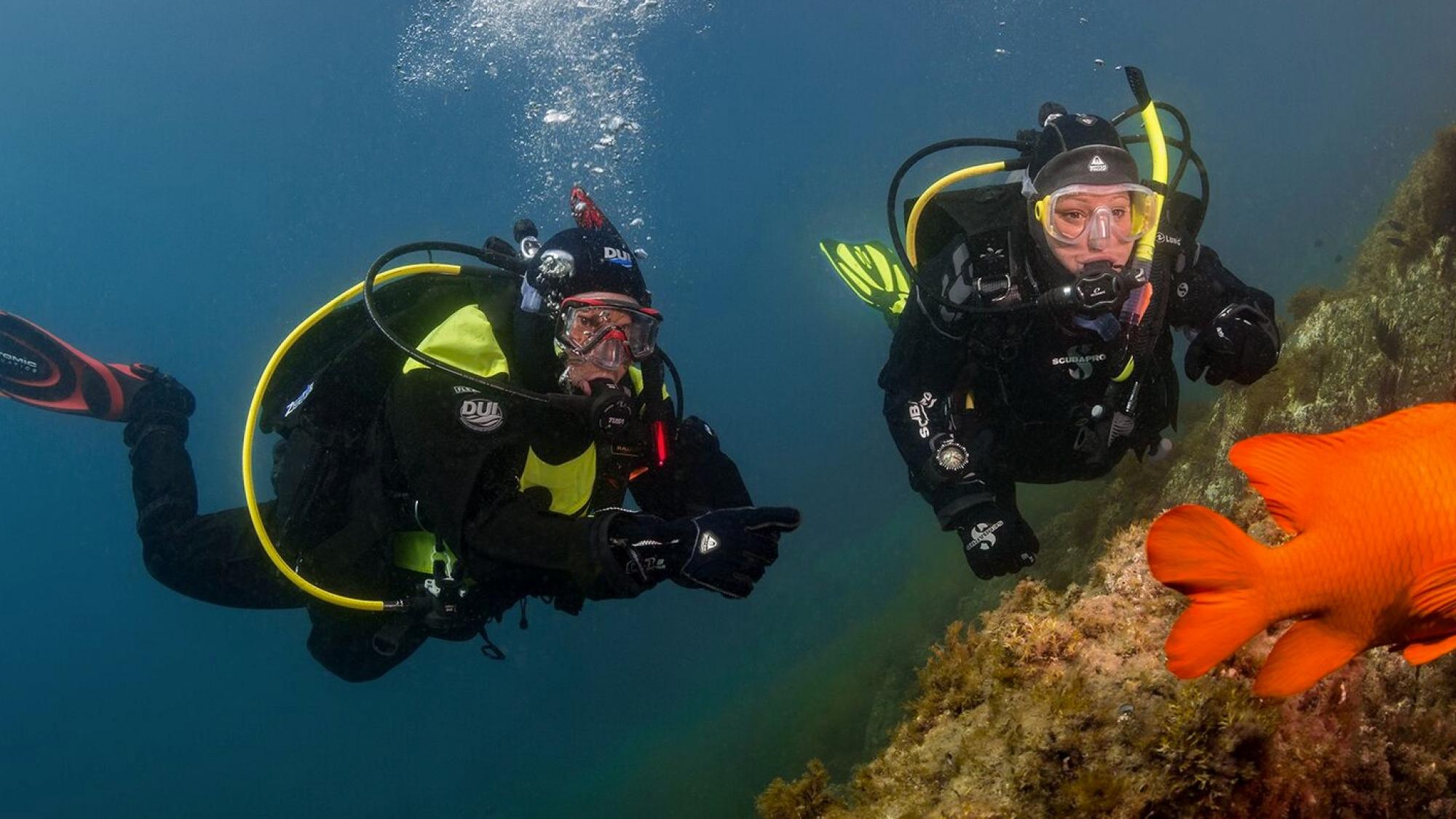Designed for cooler waters, dry suits create a seal around your wrists and neck to keep the water out and keep you dry.
الوصف
Dry suits keep you dry by creating a seal at your wrists and neck. Because your boots are usually attached to the suit, you just need to keep your head and hands warm with a hood and gloves. Dry suits also keep you more comfortable in cooler surface temperatures and in a brisk wind.
Standard Features
- All dry suits need a special watertight zipper. Suits with a zipper across the back of your shoulders may require the assistance of another person to get into and out of. There are many suits with zippers positioned for self-donning.
- Wrist and neck seals must fit snuggly against your skin to keep water out, but not too tight to avoid breathing or circulation issues.
- To add air as you descend and to release air as you ascend, your dry suit must have an inflator and an exhaust valve. Some suits have a wrist dump valve and others have shoulder or automatic dump valves.
Dry Suit Styles
- Neoprene dry suits are made of the same material as wetsuits, except they exclude water. They fit close to your body, provide excellent insulation and are really buoyant.
- Shell suits refer to the fact that the outer shell keeps you dry, but your wear undergarments underneath it to keep you warm– thicker undergarment for really cold water, or thin protection for temperate water.
Optional Features
- Kneepads, elbow pads and seat pads to better protect these areas of your dry suit.
- Pockets are useful for items like slates, and are usually located on the thigh.
- Some manufacturers offer the option of connecting a hood to your dry suit for extra warmth.
- Certain dry suit models have foot coverings that allow you to wear heavy-duty boots over them.
How to Choose
If you dive where the water or air temperature makes a dry suit necessary or desirable, don’t hesitate to get advice and help from a dive professional at your PADI Dive Center. Then, take the PADI Dry Suit Diver specialty course to learn about choosing, using and caring for dry suits.
- Pick your dry suit style based on your local dive conditions and the advice of your dive professional.
- Find the appropriate size, usually ranging from extra small to extra large. Choose what undergarments you will use and try on several suits with your undergarments on.
- Undergarments made from ThinsulateTM or Polartec®, or similar synthetics, are relatively thin and provide effective insulation even when wet.
- Many undergarments wick perspiration away from your skin. Look for garments that have an outer layer that is wind and water resistant.
- Evaluate the fit including boot comfort, snug wrist and neck seal, ease of zipping, ease of pushing inflator and deflator buttons with gloves, and ease of moving around in.
- Narrow down your choice by fit and comfort. Then, make the final decision based on style, color, optional features and personal preference. A dry suit is a big investment, so you want the right one. Don’t forget to also purchase your undergarments.
Maintenance
- After a dive, rinse your dry suit in fresh water, but make sure to close the zipper to avoid getting water inside. If there is already water inside, rinse the inside too.
- Flush water over and through the inflation and exhaust valves.
- Pay close attention to the zipper. If it’s dirty, gently clean it with a soft brush and soapy water.
- Hang your suit out of direct sunlight to dry. Dry the interior first, if you rinsed it, by gently turning it inside out.
- Lubricate the zipper as specified by the manufacturer.
- Store the suit gently folded up as recommended by the manufacturer. You can tuck latex seals into the suit arms and body to help protect them.
- If you need to launder the undergarment, follow the manufacturer’s instructions because some detergents may harm the insulation characteristics. Store undergarments on a wide hanger.







 المخلفات البحرية
المخلفات البحرية
 حماية أسماك القرش وأسماك الراي
حماية أسماك القرش وأسماك الراي
 Adopt The Blue
Adopt The Blue













